Recipients of IUMRS Frontier Materials Scientists Award 2022

NOVA University
Prof. Fortunato is a Chair Professor in the Materials Science Department at the Faculty of Science and Technology at NOVA University of Lisbon and was Vice-Rector of this university. She has coordinated the research area since 2017. She was also Director of the Associated Laboratory of the Institute of Nanomaterials, Nanofabrication and Nano-modelling. From 2015 to 2020 she was part of the Committee constituted by seven researchers that formed the European Commission Scientific Advice Mechanism based on scientific evidence. Since 2010 she has been in the Chancellery of the Honorific Orders of Portugal, at the Presidency of the Republic. Prof. Fortunato’s main research field is on transparent electronics using sustainable materials and environmentally friendly technologies. In 2008, at the 1st edition of the European Research Council ERC grants, she was awarded an Advanced Grant for the project INVISIBLE, considered by the European Commission to be a success story. In the same year, she showed with her group the possibility of manufacturing the first paper transistor, starting a new field in paper electronics. In 2018 she was awarded with a second Advanced Grant for the project DIGISMART (Multifunctional Digital Materials Platform for Smart Integrated Applications). Recently, and following on from the exploratory results of the DIGISMART, she obtained Proof of Concept grant from ERC with the e-GREEN project: From forests to Green Electronics, focusing on exploring environmentally friendly and low-cost materials and technology exploration. In 2022, she was part of the group of 27 inspiring European Women, elected by the current French Presidency of the European Union. She is an elected member of the Engineering Academy, the European Science Academy, the Lisbon Science Academy, and the Europaea Academy. She has been on the Luso-American Foundation for Development Board of Trustees since 2014. Presently, since 30th March 2022 she is the minister of Science Technology and higher education of Portugal.

Wuhan University
Professor HE Jun is a professor at School of Physics and Technology, Wuhan University, China. His main research field is low dimensional semiconductor materials and electronic devices. Facing the critical scientific problems and key technical bottlenecks in information devices based on low-dimensional structure, Prof. He has carried out systematic research. In order to solve the problem of multi physical mismatch in traditional epitaxial growth, Prof. He has developed a universal silicon-compatible van der Waals epitaxy technology. Van der Waals virtual substrates are introduced between epitaxial substrate and epitaxial material, which effectively inhibits the formation of dislocations and defects and breaks through the limitations of multi physical mismatch in the process of heterogeneous interface integration. Based on this technology, the bottleneck of epitaxial growth of both non-layered and layered two-dimensional materials, especially on the silicon (100) surface, has been realized. Traditional integrated circuit technology is facing the challenges of low intelligence, high energy consumption and low fault tolerance. The development of new device technology has become the focus of current research. Prof. He has developed a new method to build two-dimensional van der Waals heterostructures, and realized high-performance electronic and optoelectronic devices. This is important research progress in the field of new electronic devices with low power consumption, computing in memory and high-performance multi-function integration. His work has achieved a series of original results, including a high-performance infrared nonvolatile memory based on two-dimensional layered/nonlayered material heterojunction, high-performance nonvolatile memory and infrared detector based on trap effect, and unipolar memristor and transistor integrated with memory and computing. Prof. He has realized the regulation of vacancy defect energy levels utilizing is electron atoms. His work reveals the regulation mechanism of defect state and surface interface state of new low dimensional semiconductors on their properties. It has made an important forward-looking exploration for the application of new low dimensional semiconductors in the field of electronics and Optoelectronics. So far, Prof. He has published more than 200 SCI papers, which are cited for more than 15000 times. Based on his outstanding research results, he won the National Science Fund for Distinguished Young Scholars and the title of Young and middle-aged leading scientists, engineers and innovators of the Ministry of Science and Technology. He has also received National Special Support Program for High-level Talents by the Organization Department of Communist Party of China Central Committee (Ten Thousand Talents Program). Recently, He won the first prize of Natural Science Award of Hubei Province and the first prize of Science and Technology Award of China Materials Research Society. To summarize, Prof. He has made innovative work in the field of new information functional devices. His work reflects his high scientific literacy and pioneering vision, which has laid a scientific foundation for the development of new devices in Post-Moore law period.

Chinese Academy of Sciences
Lei Jiang is professor of Technical Institute of Physics and Chemistry, Chinese Academy of Sciences. His main research field is Bioinspired interfacial material systems with superwettability. Learning from nature, Prof. Jiang has studied the superhydrophobicity of lotus leaf surface and the superhydrophilicity of animal cornea since 1998, and found that the basic principle of static superwettability is the static wetting is determined by the cooperative effect of nanostructure and surface energy. He then determined the intrinsic threshold of liquid lyophilicity-lyophobicity, modified the lyophilicity-lyophobicity limitation of all liquids in Young’s equation, and proposed that the transition point of the superlyophilicity and superlyophobicity on the nanostructure is the lyophilicity-lyophobicity limitation. Based on the study of static superwettability, he studied the dynamic superwettability characteristics of a variety of organisms, such as the conical microstructure on the surface of water strider legs, spider silk and cactus, and the inner conical microstructure of ion channels, all had the directional driving ability of microfluidics, and he proposed the direction of liquid transport is regulated by chemical composition gradient, rough gradient, curvature gradient, etc. He established a superwetting interfacial material system including 64 combinations, and expanded to various liquid systems with different pressure and temperature ranges, leading and promoting the global development of this field. So far, he has published more than 800 SCI papers, with >153,000 citations and an H-index of 184 (From Google Scholar). In 2021, superwettability technology was selected as one of the IUPAC top ten emerging technologies in chemistry. Prof. Jiang has also led the way in exposing an extraordinary range of potential applications for his discoveries and transferring his research findings from the laboratory to practical products in the market. He has 70 patents and 56 pending patent applications. Up to now, some of them have already been developed to form terminal technologies that are widely commercial, such as superwettibiliy-based self-cleaning technique, oil-water separation technique, phase-change liquid-cooling technique, and nano green printing technique. A variety of commercial superamphiphobic self-cleaning products, such as textile applied in ShanShan suit, Erdos cashmere sweater, Bosideng down jacket, have been generated by Professor Lei Jiang’s group. More than 4 million self-cleaning nano-neckties with superamphiphobic functions have been produced by ELITE company in Ningbo, China. Furthermore, superamphiphilic room temperature curing self-cleaning coating technologies have been applied to more than 0.2 million m2 of building surfaces. Superwettibiliy-based oil/water separation technologies have been applied to nearly 900 ships in total and other large transports travelling around the world. Specially, Pakistan nuclear station has purchased 8 machines to protect their electricity systems for emergency. A simple, fast, controllable manufacturing route has been developed to produce more than 10000 pcs superareophobic chips for the Sugon company in China. Novel phase-change liquid cooling servers have already been applied to the national supercomputing centers or network information centers of China, locating in Beijing, Kunshan, Chengdu, Zhengzhou, respectively. By printing of superoleophilic nanomaterials on superhydrophilic plate substrates, a terminal technology is developed and has currently been used to print newspapers by more than 20 publishers in China. Furthermore, the green printing equipment has already been sold to South Korea.
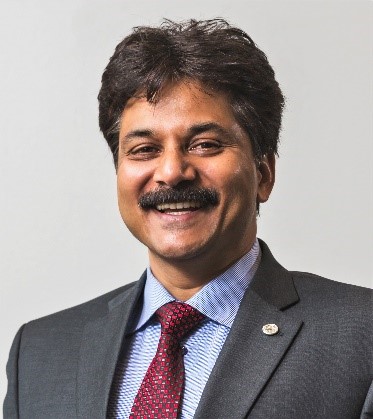
University of Cologne
Sanjay Mathur is a Chair Professor and Director of the Institute of Inorganic Chemistry at the University of Cologne in Germany. He is also the Director of the Institute of Renewable Energy Sources at the Xian Jiao Tong University, Xian, China and a World Class University Professor at the Chonbuk University in Korea. He is a Visiting Professor in the Institute of Global Innovation Research at TUAT, Japan and a SPARC Faculty at IIT Madras, India. His main research field is application of nanomaterials and advanced ceramics for energy technologies. Prof. Sanjay Mathur holds 11 patents and has authored/ co-authored over 500 original research publications (h index, 66) and has edited several books. He serves as the Editor for Journal of Electroceramics, and for NanoEnergy. He is an Academician of the World Academy of Ceramics and Fellow of the American Ceramic Society and ASM International. He was awarded the Honorary Doctorate of the Vilnius University in 2016. He is an Academician of the World Academy of Ceramics and Fellow of the American Ceramic Society. Since 2018, he chairs the Academic Affairs Committee of the Materials Research Society. He was awarded the R. C. Mehrotra Lifetime Achievement Award of Indian Science Congress Association in January 2020. He is the President-elect of the American Ceramic Society. He was elected to the European Academy of Science in 2021 and as Foreign Fellow of National Academy of Science, India (2021). He was awarded the Woody White award of the Materials Research Society (MRS) in 2021. He serves on the European Materials Research Society Council. He was awarded the Orton Jr. Lecture of the American Ceramic Society (2022).

Osaka University
Prof. Tohru SEKINO is the director at Department of Advanced Hard Materials at Osaka University. His main research is Ceramic and nanocomposite materials science. Prof. Sekino served/is serving on the editorial board of several journals, including a position as associate editor of the International Journal of Applied Ceramic Technology, international editorial board of High Temperature Materials and Processes, editorial board of Journal of Silicate Based and Composite Materials, Materials Transactions, and so on. He is a member of wide range of national and international societies including MRS, MRS-J, MRS-S, the American Ceramic Society, Ceramic Society of Japan, Chemical Society of Japan, Japan Institute of Metals, Japan Society of Powder and Powder Metallurgy, the Society of Nano Science and Technology, Japan, the Japanese Society of Oral Implantology, the Japanese Society for Dental Materials and Devices, etc. In addition, he serves several conference chairs, organizers, organizing committee, advisory committee, publication committee, and so on of not only domestic but also international conferences/symposiums/meetings. Especially he serves steering, organizing and editorial committee of the International Symposium on Eco-Materials Processing and Design series for more than 20 years as a key member. According to the significant academic achievements, he was awarded various scientific and technological prizes including the Scientific Encouragement Award by The Japan Society of Powder and Powder Metallurgy (1997/2004), the Prizes for Science and Technology by the Minister of Education, Culture, Sports, Science and Technology (MEXT, Japan), Japan (2016), and the 70th Ceramic Society of Japan Awards for Academic Achievements (2016), and so on.
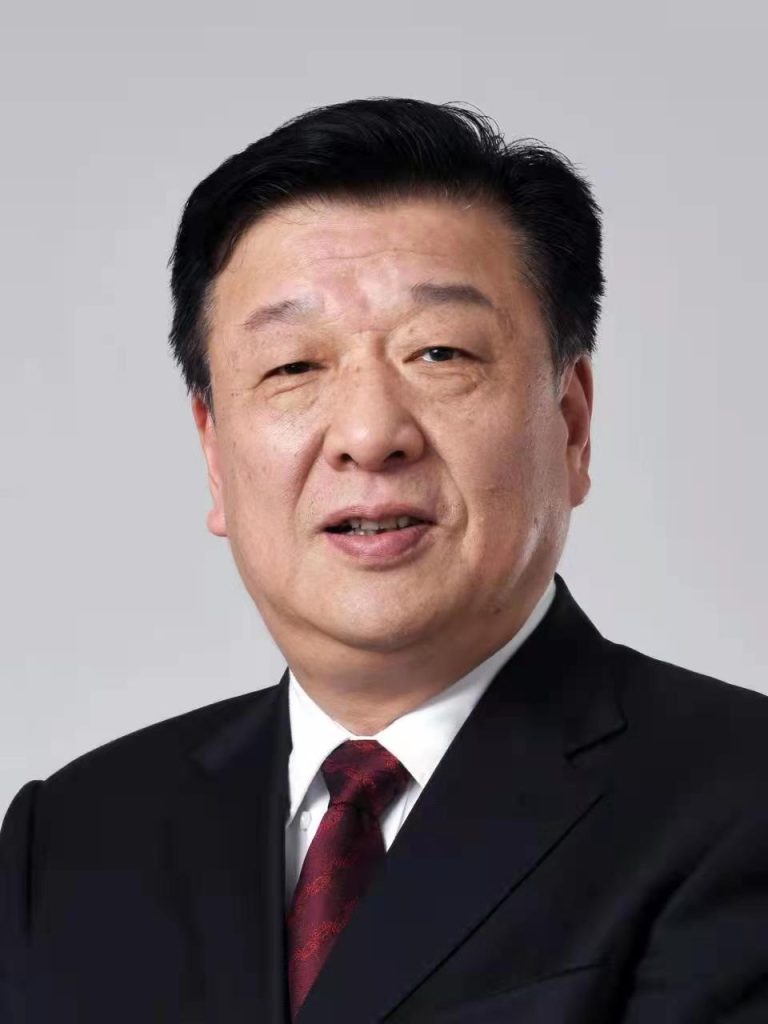
Sun Yat-Sen University
Dongbai Sun is a professor of Sun Yat-sen University, China. His main research interests are big scientific research facility, synchrotron X-ray techniques, corrosion science and metallic materials. Prof. Sun focuses his research on the safety assessment and characterization of engineering materials based on the Big Scientific Research Facility and the solution for the significant scientific problems, for example, the trans-scale and multi-fileds coupling as well as the accelerating test. He has established a new research paradigm of ‘4R’ in the tests and research about the service safety of engineering materials, which means that investigating the Real failure process of the Real materials in Real-time under the Real service conditions. His research has profoundly and systematically improved the test and research capabilities of large-size, full-scale materials/components and comprehensively strengthen the safety assessment technologies in China. Prof. Sun has led and completed the planning, designing and construction of four big scientific research facilities, independently, in Beijing and Guangdong. As the executive leader, Prof. Sun led the construction of Materials Service Safety Assessment Facilities (MSAF) located in USTB, which have made breakthroughs in a series of key technologies and devices, including experimental simulation of extreme and complex working conditions, in-situ observation and analysis of large size, full-scale materials/components, and so on. By experimentally simulating the extreme and complex service conditions for large size and full-scale materials/components, MSAF established by Prof. Sun provides a series of hybrid test capabilities, which can overcome the limit of the scale and achieve the coupling of extreme environmental conditions, including synchrotron X-ray tests in multiple scales, exposure tests with the multi-field coupling of seven extreme environmental factors, extreme mechanical loading tests with accurate measurements and super long-term (> 400000 hours) creep and ‘creep+’ tests. This extensible, integrated and collaborative full-process simulation system provides a powerful and promising platform for the state-of-the-art research on failure behaviors and mechanisms of engineering materials. This large scale facility makes up the lack of the environmental simulation capability of the physical testing facilities and overcomes the drawback of the expensive cost for repeating tests. The international evaluation expert group commented that MSAF facility is among the world’s highest level in the field, which can provide a platform for many comprehensive studies and significantly improve the innovative research on the service safety assessment of engineering materials in China and worldwide. Now, Prof. Sun is leading an international team of expert and technical staff on the design and construction of the Shenzhen Innovation Light-Source Facility(SILF), which aims to expedite the development of high-tech industries and international cooperation in Guangdong -HongKong-Macao Great Bay.
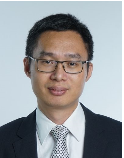
Nanyang Technological University University
Xiaodong Chen is professor of Nanyang Technological University, Singapore. His Main research field is soft composite materials for flexible electronics. Prof Chen’s cutting-edge interdisciplinary research has advanced the frontiers of materials science and flexible electronics and created the potential to disrupt advanced manufacturing, smart wearables, and digital healthcare. There is ever-rising demand for more seamless human-electronic device integration to enable consistent data capture and application. However, the major challenge lies in the inability of conventional electronics to pick up reliable biological signals from the human body due to fundamental mismatches such as incompatible surfaces (soft skin vs rigid sensors) and signal reading formats (physical vs digital systems). Determined to overcome these obstacles, Prof Chen focused his research on soft bioelectronics to develop solutions that could bridge the space between humans and technology. Prof Chen has created wide-ranging soft composite materials for flexible electrodes with superior stretchability and electronic conductivity. These electrodes can conform and adhere to human skin and animal tissues and are easily scalable. Through these efforts, he pioneered an emerging field called mechanomaterials by establishing a method that proactively programs the functionalities of materials by leveraging the force-geometry-property relationships. The qualification of his effectiveness in resolving challenges for biological sensing is evident from the implementation of advanced functional materials to create bioelectronic interfaces capable of translating biosignals into electrical outputs. This evolution enables the digitalization of human senses to augment human performance. Prof Chen’s most recent creations include the world’s first plant-based robot, which he developed using a soft composite material to detect plant electrical signals. The innovativeness of this research holds promising prospects for crop health monitoring and food security enhancement. Taking inspiration from the human perception system, Prof Chen augmented the sensing capability of soft sensors by emulating the human nervous system. He elevated the precision of hand gesture recognition technology to 100% by fusing visual and tactile sensors. He also developed an artificial neural network for use in electronic noses, which can assess the freshness of meat at up to 98.5% accuracy, greatly enhancing food safety. As illustrated in his research achievements, the digitalization of the human senses holds immense potential to become a technology enabler for the next-generation soft robotics, contributing to advanced prostheses, wearables for healthcare, and other smart/precision applications. Prof Chen’s keen interest in fundamental research to benefit humanity is well-demonstrated in his pursuit to partner with the private sector and government agencies to accelerate the deployment of his technology. For example, his inventions, such as artificial epidermis based on plasticized silk and wearable tactile sensors, are undergoing validation tests for skincare product development. The stretchable electrodes designed for long-term monitoring of long-term chronic conditions have been licensed to companies for commercialization development. Prof Chen has published over 330 highly cited and globally recognized papers, chalking up more than 30,000 citations to date. His illustrious research has garnered several prestigious accolades for his exceptional scientific contributions, including the Singapore President Science Award, Winner of Falling Walls, and Friedrich Wilhelm Bessel Research Award. To summarize, Prof. Chen demonstrates scientific competence and exemplary leadership in his field, harmonized with his relentless dedication to interdisciplinary research and his capacity to disrupt advanced manufacturing, smart wearables, and digital healthcare.
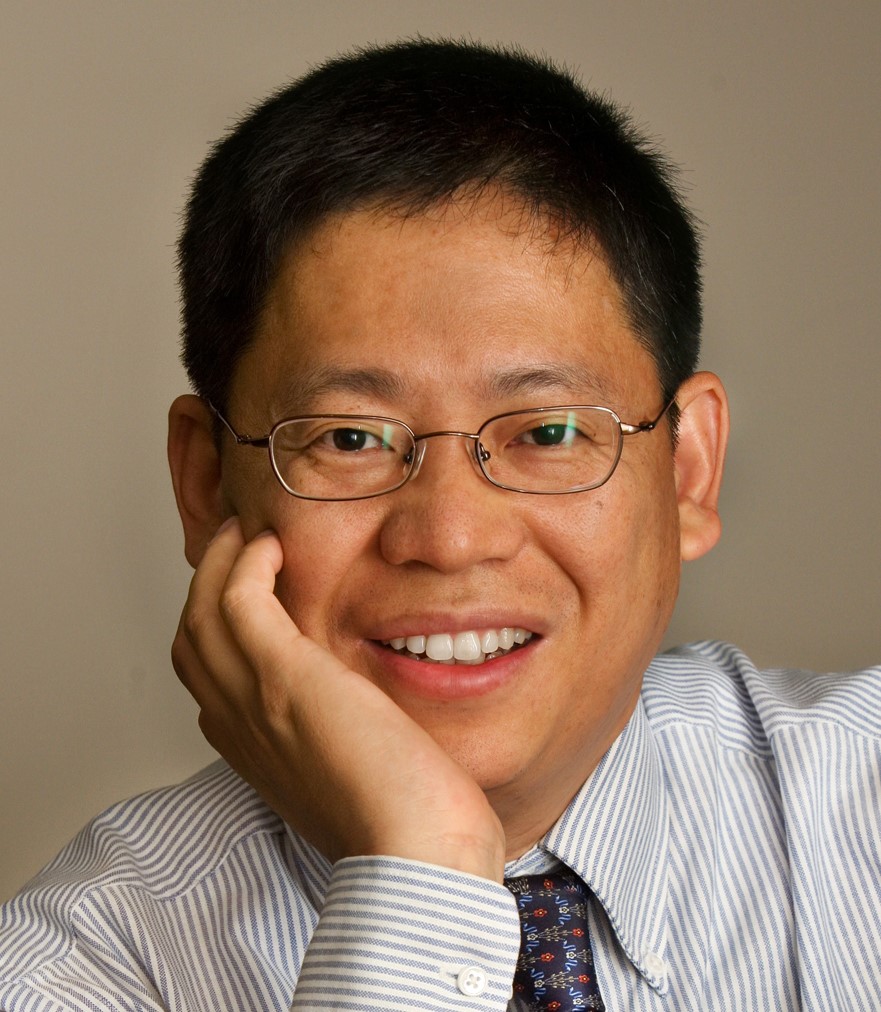
Georgia Institute of Technology
Younan Xia is Brock Family Chair Professor of the Georgia Institute of Technology, USA. His main research fields include nanomaterials and biomaterials. Xia has played a leadership role in nanomaterials development, continuously pushing the frontiers of materials research with impactful breakthroughs to advance humanity. Xia’s original contributions to materials research are exemplified by the invention and development of many nanomaterials for a range of applications. Xia pioneered and defined the research in colloidal nanocrystals by bringing in both mechanistic understanding and experimental control to the nucleation and growth steps. Specifically, Xia helped transform the colloidal synthesis of nanomaterials from an art into a science. The nanomaterials invented in his group have opened a world of opportunities for applications in catalysis, energy conversion, photonics, photovoltaics, display, sensing, imaging, and biomedicine. As a successful story, his invention of silver nanowires has led to the development of a viable replacement for the traditional indium-tin-oxide (ITO) coating. The technology was licensed to Cambrios (https://www.cambrios.com/) for the commercial production of flexible, transparent, and conductive coatings (ClearOhm®). The coatings are increasingly incorporated into a variety of products, including large, low-cost displays and touch screen interfaces with tablet PC, smartphone, and iPad. It is a fair statement that the silver nanowires invented by Xia about 20 years ago are enabling the introduction of cost-effective and high-performance touch screen interfaces, dramatically changing how people interact and communicate with each other. Xia is widely praised for developing simple and elegant techniques for controlling the structure and alignment of electrospun nanofibers. As another successful story, Xia’s technology on the alignment of electrospun nanofibers was licensed to Retectix (a medical device startup) for the launch of the first FDA-approved nanofabricated material for use in neurosurgical tissue reconstruction and the treatment of non-healing chronic wounds. The initial offering in this line of products is the DuraStarTM Dural Substitute for use in neurosurgical procedures. Xia invented metal nanocages with hollow interiors, ultrathin and porous walls, as well as well-defined surface structures for biomedical and energy applications. For the nanocages made of platinum-group metals, they promise a paradigm shift in developing heterogeneous catalysts with a minimal precious metal content for sustainable use in fuel cells and batteries. For those made of gold and silver, they can serve as a novel class of theranostic agents for nanomedicine, including imaging contrast enhancement, controlled release, and photothermal treatment. Xia’s leadership in materials research and education can also be found in his many insightful and influential review/perspective articles. His visionary articles have inspired many researchers in the field, contributing to the education of next-generation materials scientists and engineers.
Recipients of IUMRS Frontier Materials Young Scientists Award 2022

University of Cambridge
Silvia Vignolini is currently a University Professor in Sustainability and Bio-inspired materials at the Chemistry Department in Cambridge. She studied Physics at the University of Florence, Italy. In 2009, she was awarded a PhD in Solid State Physics at the European Laboratory for non-Linear Spectroscopy and the Physics Department at the University of Florence. In 2010, she moved to Cambridge as a post-doctoral research associate working in the Cavendish Laboratory and the Plant Science Department. In 2013, she started her independent research becoming a BBSRC David Philip Fellow. Her research interest lies at the interface of chemistry, soft-matter physics, optics, and biology. In particular, her research focuses on the study of how natural biopolymers (like cellulose) are assembled into complex architectures within living organisms and they can be exploited to fabricate a sustainable functional materials.
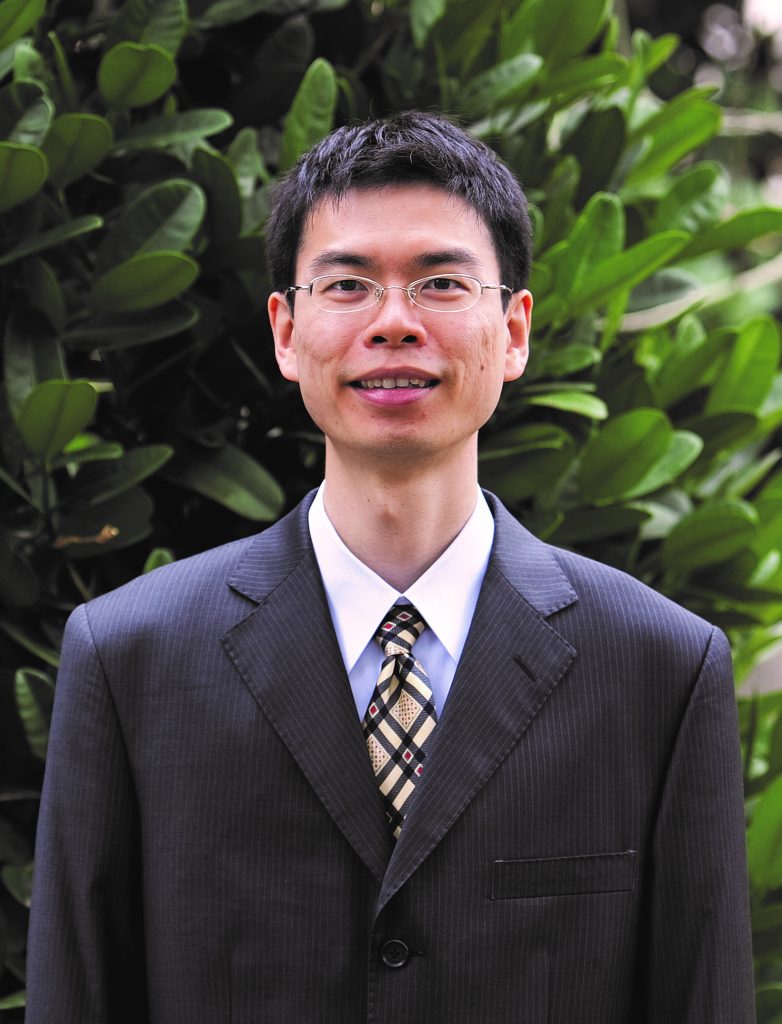
National Tsing Hua University
Tzu-Wei Wang is currently a Professor of the Department of Materials Science and Engineering at National Tsing Hua University, Taiwan. He completed his Ph.D. degree from the Institute of Biomedical Engineering, National Taiwan University. His postdoc training was conducted at Harvard University during 2007-2009. He joined National Tsing Hua University as an Assistant Professor in 2009, and then promoted to Associate Professor in 2013, and Professor in 2018. His research interests are: 1) Development of functionalized smart biomaterials for the applications in tissue engineering and drug delivery; 2) Control of extracellular microenvironment using physical, chemical, and biological approaches for the manipulation of stem cell fate. He has published over 50 scientific peer-reviewed SCI papers (h index 28, i10 index 39) and received several international patents in the past few years. He has been awarded with TERMIS Young Plenary Award and several Young Investigator Awards in the field of Biomaterials and Tissue Engineering. He also received Research Scholar Award and Biomedical Engineering Award for his research studies and contribution in the Biomateials and Controlled Release Society, Taiwan.
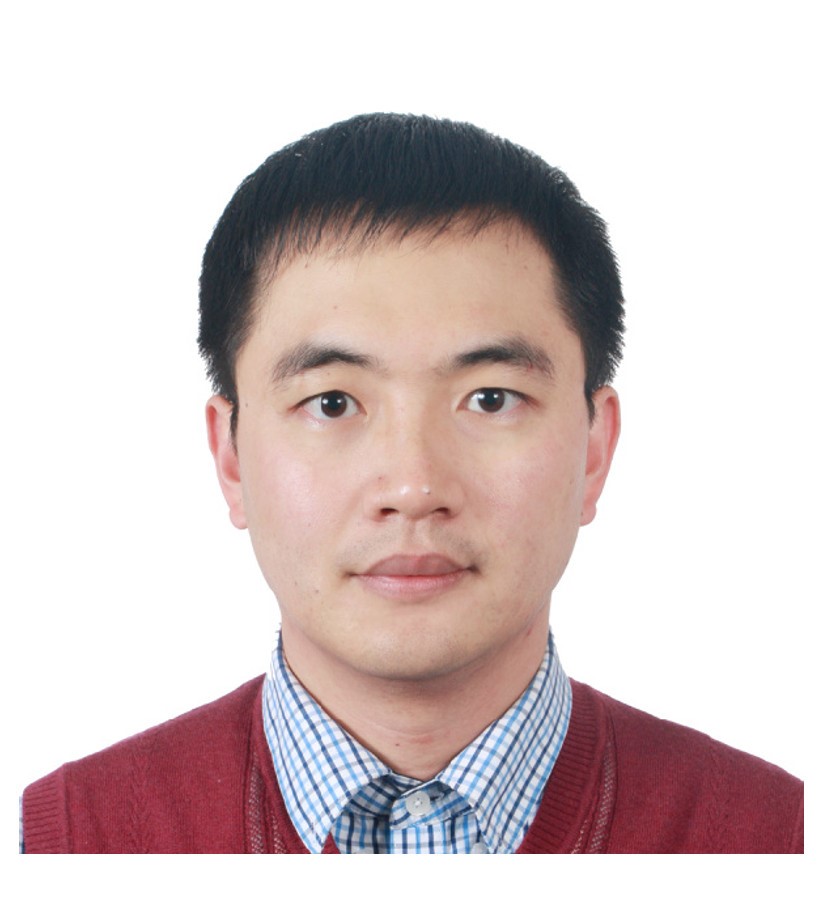
Tsinghua University
Prof. Kai Liu obtained his B.S. in applied physics at Xi’an Jiaotong University and Ph.D. in physics at Tsinghua University. He joined the School of Materials Science and Engineering at Tsinghua University in 2015 after postdoctoral research at University of California, Berkeley, and was promoted to tenured position in 2021. His research relates to interface engineering of low-dimensional materials and heterostructures for high-efficiency sensing and neuromorphic devices, as well as for electronic devices working in harsh environments. Prof. Liu has published more than 110 papers that have received >7,500 citation times in leading journals including Science, Nature Communications, Science Advances, Advanced Materials, Nano Letters, etc., and had more than 50 authorized China/US invention patents. He has been involved in a number of research projects from National Natural Science Foundation of China and National Key R&D Program of China. He has been appointed as young editorial board members of SmartMat, J. Electron. Sci. Technol., Chinese Physics Letters, and Chinese Physics B. His awards include the First Prize of Science and Technology Award of Chinese Materials Research Society (as the 1st-ranked winner, 2020), Rising Star Speaker Award at ICMAT (2019), National Outstanding Doctoral Dissertation Award of China (2010), etc.

Prof. Chengtie Wu, the Deputy Director of Shanghai Institute of Ceramics, Chinese Academy of Sciences (SIC, CAS), the Principal Investigator for National Key Research and Development Program of China. Prof Wu’s research focuses on bioactive inorganic materials for tissue regeneration. He completed his Ph.D in 2006, and then he worked in the University of Sydney, Dresden University of Technology, Germany and Queensland University of Technology where he was awarded Vice-Chancellor Research Fellow and Alexander von Humboldt Fellow. In 2012, Dr Wu has been recruited to work in SIC, CAS, as Leading Talent Program of Chinese Academy of Sciences. Then he was awarded Recruitment Program of Global Young Experts of China, National Ten Thousand Plan Science and Technology Leader, Shanghai Pujiang Talent Program and Shanghai Outstanding Academic Leaders. Up to now, Prof Wu has published more than 250 SCI peer-review journal papers, including Science Advances, Advanced Materials, Materials Today, ACS Nano, Biomaterials and Nano Letters, etc. From 2015 to 2021, the applicant was honored by “Most Cited Chinese Researchers” for seven consecutive years, which was issued by Elsevier publisher, H index: 75. He is now the Associate editors for “Applied Materials Today”, and “Journal of Inorganic Materials” as well as the editorial board member of “Acta Biomaterialia” and “Bioactive Materials”. Prof Wu has been awarded 54 patents, in which 12 of them have been transferred to companies. Prof Wu was awarded the Journal of Materials Chemistry Lectureship in 2015, Young Scientists of Chinese Biomaterials Society in 2016, Outstanding Young Scientists of Chinese Ceramics Society in 2018, First Prize of Science and Technology of Chinese Biomaterials Society in 2019, and Second Prize of Science and Technology of Jiangsu Province in 2020.

Fudan University
Peng Zhou is a full professor at the State Key Laboratory of ASIC and system, School of Microelectronics, Fudan University, China. He received his B.S. (2000) and Ph.D. (2005) degrees in physics from Fudan University, China. He has invented a new type Flash memory technology with both high speed and non-volatile, and realized high-area-efficiency single-transistor logic in-situ memory technology, and obtained high-performance storage devices, high-efficiency algorithms and chips. Currently, Professor Zhou is interested in novel high-efficiency and low-power electronic devices based on layered materials, focusing on the application in memory, synaptic electronics, and neuromorphic systems. He has published more than 200 scientific papers on Nature Nanotechnology, Nature Electronics, and Nature Communications etc.
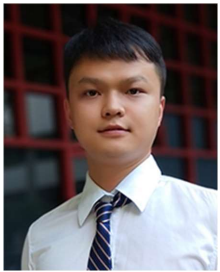
City University
of Hong Kong
Dr. Tao Yang is currently an Assistant Professor of the department of Materials Science and Engineering at the City University of Hong Kong (CityU), China. He also serves as the core member of 3D-APT Unit of Hong Kong and Hong Kong Branch of Chinese National Engineering Research Centre at CityU. His research is mainly focused on innovative design and microstructural control of advanced structural materials (such as the intermetallic materials, high-entropy alloys, superalloys, titanium alloys, etc) by using multiple state-of-the-art techniques, such as the 3D atom probe tomography (3D-APT), high-resolution transmission electron microscope (HR-TEM), and 3D printing. As a creative young scientist, Dr. Yang has made great contributions to the area of materials science and engineering by devoting himself to solving the most challenging issues in innovative ways. During the past five years, he has made several significant breakthroughs and successfully published over 50 papers in various top journals like Science (3 papers), Materials Today, and Advanced Materials, Nature Communications, Acta Material, etc. These distinguished academic achievements help to greatly stimulate the advances of novel structural materials and associated industrial fields, including aerospace, nuclear power, chemical processing, etc.
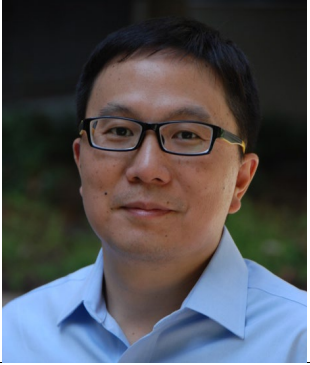
University of California
Los Angeles
Dr. Duan received his B.S. Degree from University of Science and Technology of China in 1997, and Ph.D. degree from Harvard University in 2002. He was a Founding Scientist and then Manager of Advanced Technology at Nanosys Inc., a nanotechnology startup founded based partly on his doctoral research. Dr. Duan joined UCLA with a Howard Reiss Career Development Chair in 2008, and was promoted to Associate Professor in 2012 and Full Professor in 2013. Dr. Duan’s research interest includes nanoscale materials, devices and their applications in future electronic and energy technologies. Dr. Duan has published over 300 papers with over 75,000 citations, and holds over 50 US patents. Dr. Duan has received many awards for his pioneering research in nanoscale science and technology, including MIT Technology Review Top-100 Innovator Award, Alpha Chi Sigma Glen T. Seaborg Award, Herbert Newby McCoy Research Award, US Presidential Early Career Award for Scientists and Engineers, Human Frontier Science Program Young Investigator Award, Dupont Young Professor, Journal of Materials Chemistry Lectureship, International Union of Materials Research Society and Singapore Materials Research Society Young Researcher Award, the Royal Society of Chemistry Beilby Medal and Prize, the Nano Korea Award, International Society of Electrochemistry Zhao-Wu Tian Prize for Energy Electrochemistry, Science China Materials Innovation Award, America Institute of Physics Horizons Lectureship and most recently Materials Research Society Middle Career Award. He is currently an elected Fellow of Royal Society of Chemistry and Fellow of American Association for the Advancement of Science.
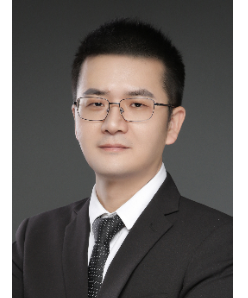
Huazhong University of Science and Technology
Dr. Jie Pan is a Professor at the School of Materials Science and Engineering of Huazhong University of Science and Technology (HUST). He received his Ph.D. in materials science from HUST in 2011, and worked in National University of Singapore (NUS) as a post-doctoral fellow from 2012 to 2014. Afterward, he joined the Institute of Metal Research (IMR), Chinese Academy of Sciences as an Associate Professor. His research is focused on the mechanical properties and deformation mechanism of metallic materials, including metallic glasses, high entropy alloys, and heterogeneous structured materials both experimentally and theoretically. The main academic achievements are as below: 1) He proposed a method to rejuvenate bulk metallic glasses to the extremely high energy state that would be typical of a glass formed on cooling at 1010 K s–1 (Nature Commun. 9 (2018) 560). Based on these rejuvenated metallic glasses, a Holy Grail in metallic-glass research, strain-hardening has finally been realized experimentally (Nature 578 (2020) 559-562). 2) He used electrodeposition to obtain the large-size gradient-structured metallic materials and revealed the gradient profile-dependent deformation behavior, excellent fracture, and impact toughness (Acta Mater. 193 (2020) 125-137; Mater. Today, 32 (2020) 94-107). 3) He fabricated the ultrafine nanotwinned structure in metallic nickel with high stacking fault energy, and revealed the continuously strengthening behavior of nanotwinned Ni even when the twin thickness is below 10 nm (Sci. Adv. 7 (2021) eabg5113). Dr. Pan has published over 40 papers in SCI journals, including Nature, Sci. Adv., Nature Commun., Phys. Rev. Lett., Acta Mater., and J. Mech. Phys. Solids. He won the “Outstanding Young Scientist Award” for amorphous and high entropy alloys for the Chinese Materials Research Society (2018), and China National Funds for Excellent Young Scientists (2020).

Westlake University
Jianhui Wang received his B.E. in MSE from Zhejiang University (2006) and a joint Ph.D. training from National University of Singapore, Dalian Institute of Chemical Physics and Zhejiang University (2006-2011). Then he worked as a Postdoctoral Fellow in the International Research Center for Hydrogen Energy at Kyushu University. In 2013, he moved to The University of Tokyo and served successively as a Project Researcher, JSPS Fellow and Chief Researcher. Since September 2018, he has joined Westlake University and become the Principal Investigator of Energy Storage & Conversion Laboratory. Dr. Wang’s research focuses on energy storage materials & technologies. The invention of LiPF6-EC-based electrolytes in 1990s is a key factor responsible for the successful commercialization of 4V-class lithium-ion batteries. However, owing to high volatility and flammability of organic solvents and thermal instability of LiPF6 salt, this electrolyte suffers from high safety risk, limited potential/temperature window, and high moisture sensitivity, failing to meet the requirements of next-generation batteries that are expected to be safe, high-energy-density and cost-effective. Dr. Wang devotes himself to designing new electrolytes to overcome these issues faced by the commercial LiPF6-EC-based electrolytes. He developed a series of new LiPF6-free and EC-free electrolytes via high salt concentration and precise molecule engineering (e.g., “single salt/single solvent” 5V-class electrolytes, fire-extinguishing organic electrolytes, and “core-shell-solvation” aqueous electrolytes) to advance lithium-ion batteries for safe operations in high voltages and wide-temperature range without bulky and expensive battery manage system as well as for low-cost manufacturing under ambient atmosphere. Apart from the electrolytes for rechargeable batteries, Dr. Wang’s research interest also includes the exploration of new approaches to circumvent the challenging issue of safe and efficient storage of hydrogen.
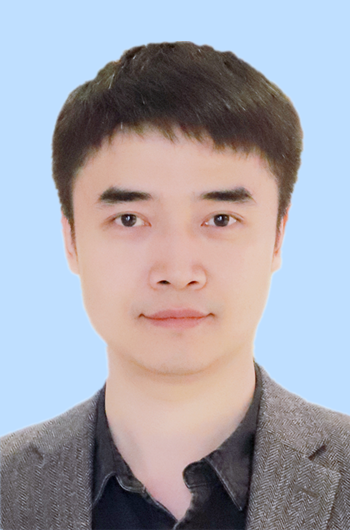
Nanjing University
Dr. Lei Wang is currently a professor in physics department in Nanjing University in China. He has been conducting research on the electrical transport properties of two-dimensional quantum materials, and has made pioneering work on fabrication of high quality 2D material heterostructure devices. In 2003, his work published in Science 342, 614-617 invented the “pick-up transfer and stacking” technique for 2D materials, which made a breakthrough in improving the quality of the 2D electronic devices, also experimentally promoted the 2D material heterostructure research field. In this field, Dr. Wang has made a series of scientific achievements, including experimental observation of the Hofstadter butterfly energy spectrum [Nature 497, 598‐602, (2013)], fractional quantum Hall states tunable with an external electric field [Science 345, 61‐64, (2014)], anomalous fractional quantum Hall states in fractal system [Science 350, 1231-1234 (2015)], strain-tunable polarization charges on monolayer atoms [Nature 514, 470-474, (2014)], excitons tunable with external electric field [Science 358, 907-910, (2017)], Correlated insulating states in twisted 2D semiconducting materials[Nature Materials 19, 861-866, (2020)], Quantum phase transitions in twisted TMDC materials [Nature 597, 345-349, (2021)]. Overall, Dr. Wang has published over 50 research papers, which have been cited over 20,000 times.
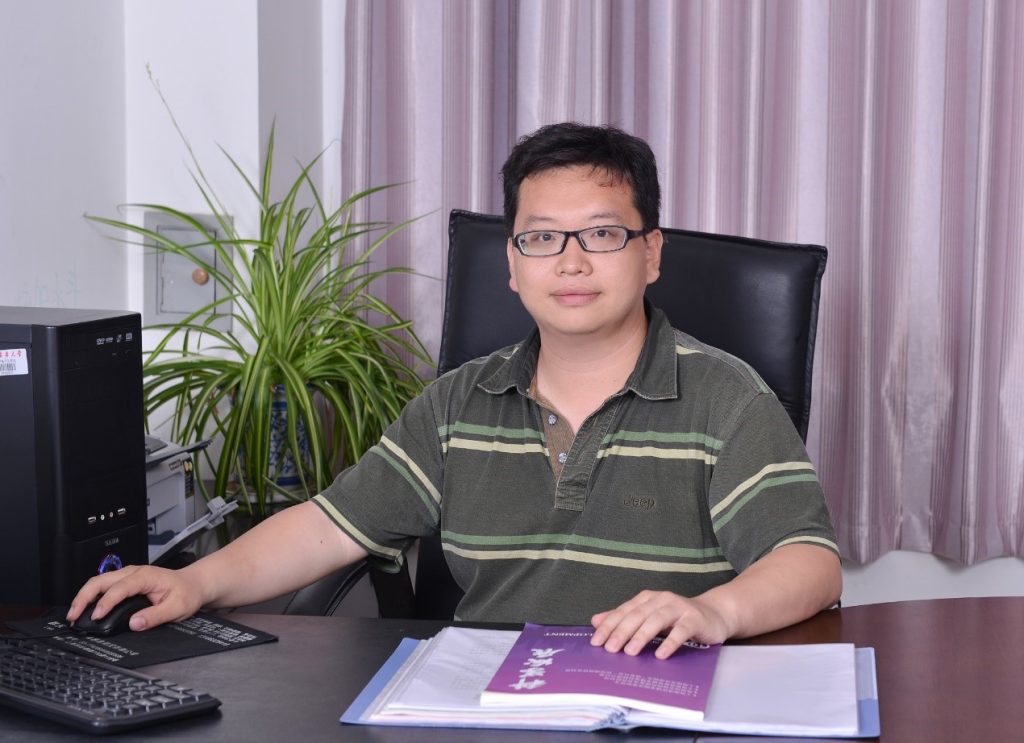
Donghua University
Wei Luo is a Professor of Materials Science at Donghua University. His research focuses on the design of novel strategy for the construction of structure-function integrated ceramic materials at low temperatures based on various functional mesoporous powders with high sintering activity. Prof. Luo received a B.A. in Applied Chemistry from Nanjing Tech University in 2006. For his graduate studies, he got his Master degree in Organic Chemistry from School of Chemistry and Molecular Engineering at Nanjing Tech University in 2009, and was awarded a Ph.D. in Chemistry from the Department of Chemistry at Fudan University in 2014. Subsequently, he began his academic career as a Lecturer in College of Materials Science and Engineering at Donghua University. He was promoted to an Associate Professor in 2016, and then a full Professor in 2018. He was the recipient of the 2022 IUMRS Frontier Materials Young Scientists Award (IUMRS-FMYSA), 2022 Youth Science and Technology Award of the Chinese Ceramic Society, 2020 Chinese Chemical Letters Outstanding Young Scholar, and 2020 Shanghai Youth May 4th Medal. Professor Luo was awarded a number of prestigious Talent Programs, such as the Excellent Young Scholars from National Natural Science Foundation of China, Youth Top-Notch Talent Support Program of Shanghai, Shanghai Rising-Star Program, and Shanghai Shuguang Program. He served as the Editorial Committee/Youth Editorial Committee member for academic journals Chinese Chemical Letters, Green Energy & Environment and Tungsten etc. He was the Chief Investigator of more than 10 scientific research programs of National Natural Science Foundation of China and Shanghai Municipality. Professor Luo has established strong international connections and long-term research collaborations with leading scientists in the areas of Materials Science and Chemistry from Australia, Japan, Republic of Korea and Europe.

Zhejiang University
Wentao Yuan obtained his bachelor degree in materials science and engineering from Tianjin University in 2012, and his Ph.D. degree in materials science and engineering from Zhejiang University under the supervision of Prof. Yong Wang in 2017. During his Ph.D study, he visited Technical University of Denmark as a visiting Ph.D. student. After that, he continued his postdoctoral research in department of chemistry (2017-2019) and school of materials science and engineering (2019-2021) in Zhejiang University, respectively. In 2021, he joined the research team leading by Ze Zhang and Yong Wang in school of materials science and engineering of Zhejiang University, as a research professor. His research interests focus on the utilizing and developing in-situ transmission electron microscopy methods, exploring the interaction mechanism between the surface/interface of catalysts and external environments (temperature, gas, pressure etc.) at the atomic scale, unveiling the dynamic structure-performance relationships, developing new strategies for the design of high-performance catalytic materials. Dr. Yuan has published over 40 peer-reviewed papers. As the first and corresponding authors, he has published over 15 peer-reviewed papers including two in Science. Recently, he has achieved important advances with his colleagues and collaborators in the in situ studies of the surface and interface active sites of the supported catalysts. They realized the direct observation of the adsorption and reaction of water molecules on the surface active sites of the catalyst at the atomic scale in an environmental transmission electron microscope. And they realized the in situ manipulation of interface active sites of supported catalysts with atomic precision via environmental transmission electron microscope. These works benefit the in-situ design of the catalyst active sites in operating conditions at the atomic level.
Recipients of IUMRS Frontier Materials Graduate Students Award
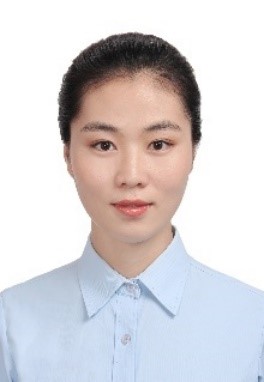
Jing Li
Southern university of science and technology, China
Research field: 3D manufacturing & technology
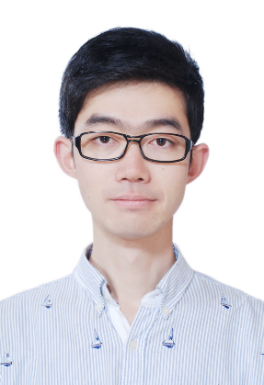
Zhe Zhao
Fudan University, China
Research Field: Design and synthesis of functional films composite
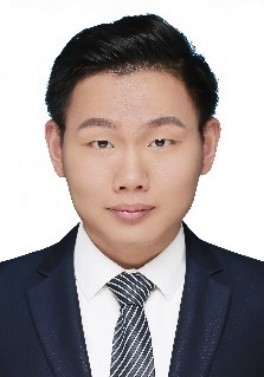
Zhenyi Zheng
Beihang University, China
Research field: Spintronics and magnetic storage material

Emanuel Abreu Antunes Carlos
NOVA School of Science and Technology, Portugal
Research Field: Solution-based metal oxides for electronic devices
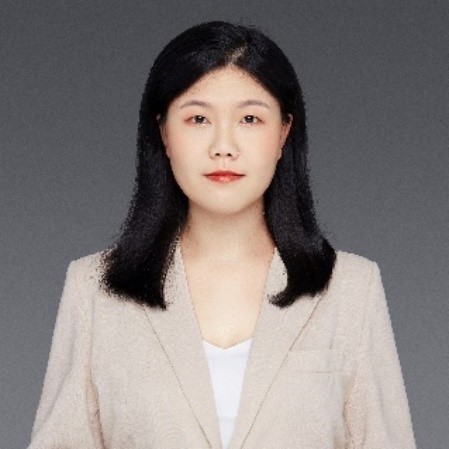
Hong Zhu
Fudan University, China
Research field: Soft miniaturized robots and intelligent materials

Fenglei Shi
Shanghai Jiao Tong University, China
Research field: In-situ TEM, electrocatalysts
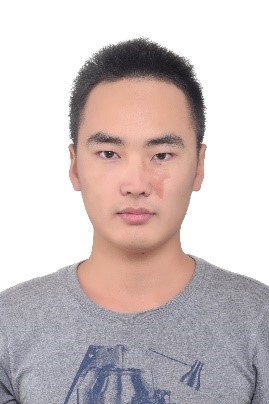
Kuncai Li
Xi’an Jiaotong University, China
Research field: Organic Thermoelectric Materials and Devices
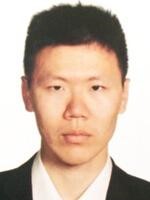
Wei Hao
The University of Texas at Austin, US
Research field: First-principles based multiscale modeling, energy storage & conversion

Congyang Mao
The University of Hong Kong, China
Research field: REDOX based antibacterial nanomaterials

Xin Xia
The Chinese University of Hong Kong, China
Research field: energy harvesting, triboelectric nanogenerator

Qingchen Shen
University of Cambridge, UK
Research field: Thermal detection, thermal energy conversion

Li Liu
Harbin Institute of Technology (Shen Zhen), China
Research field: Advanced high strength steels
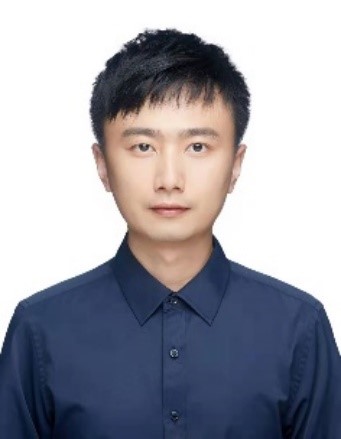
Bogu Liu
Central Iron & Steel Research Institute, China
Research field: Hydrogen storage materials; DFT calculation

Xiangdong Guo
National Center for Nanoscience and Technology, China
Research field: Nanophotonics materials; Polaritonics
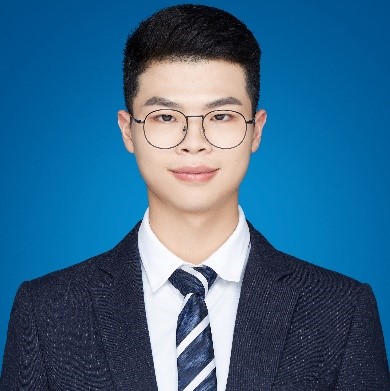
Airan Li
Zhejiang University, China
Research field: advanced thermoelectric materials

Bingyao Liu
Peking University, China
Research field: TEM, graphene, nitride, epitaxy

Zhongyang Wang
Shanghai Jiao Tong University, China
Research field: Epsilon-negative materials

Shun An
Shanghai Jiao Tong University, China
Research field: Thermal radiation, Biological infrared light source
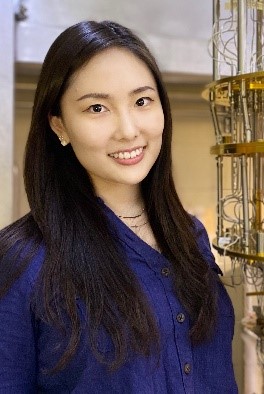
Jeong Min Park
Massachusetts Institute of Technology (MIT), US
Research field: Condensed matter physics
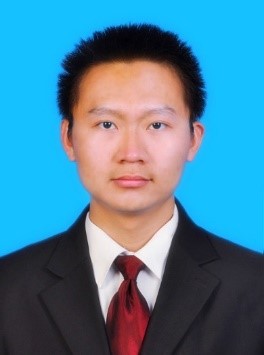
Rui Ma
Northwestern Polytechnical University, China
Research field: Nb-Si based ultrahigh temperature alloy, Intermetallic compounds, Alloying

Haiyang Chen
University of Science and Technology Beijing (USTB), China
Research field: Shape memory alloys (SMAs); Martensitic transformation

Junyan Zhang
Donghua University, China
Research field: nanofiber hybrid materials; high thermal insulation nanocomposite aerogel

Huxiang Xia
Tsinghua University, China
Research field: Phase-field Simulation; Nickel-base superalloy

Jianhong Zhang
Northwestern Polytechnical University, China
Research field: Biomaterial; Antibacterial; Phototherapy.

